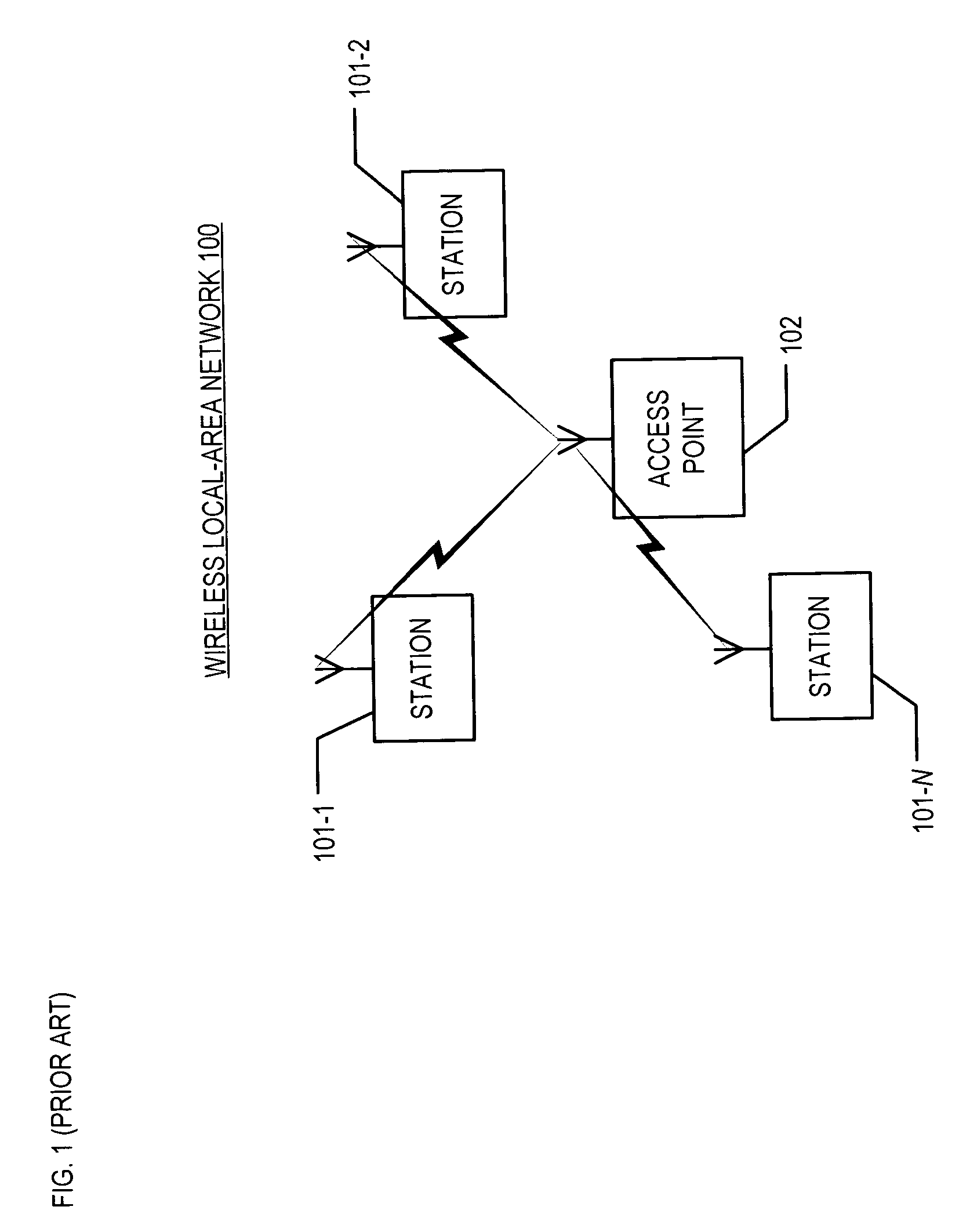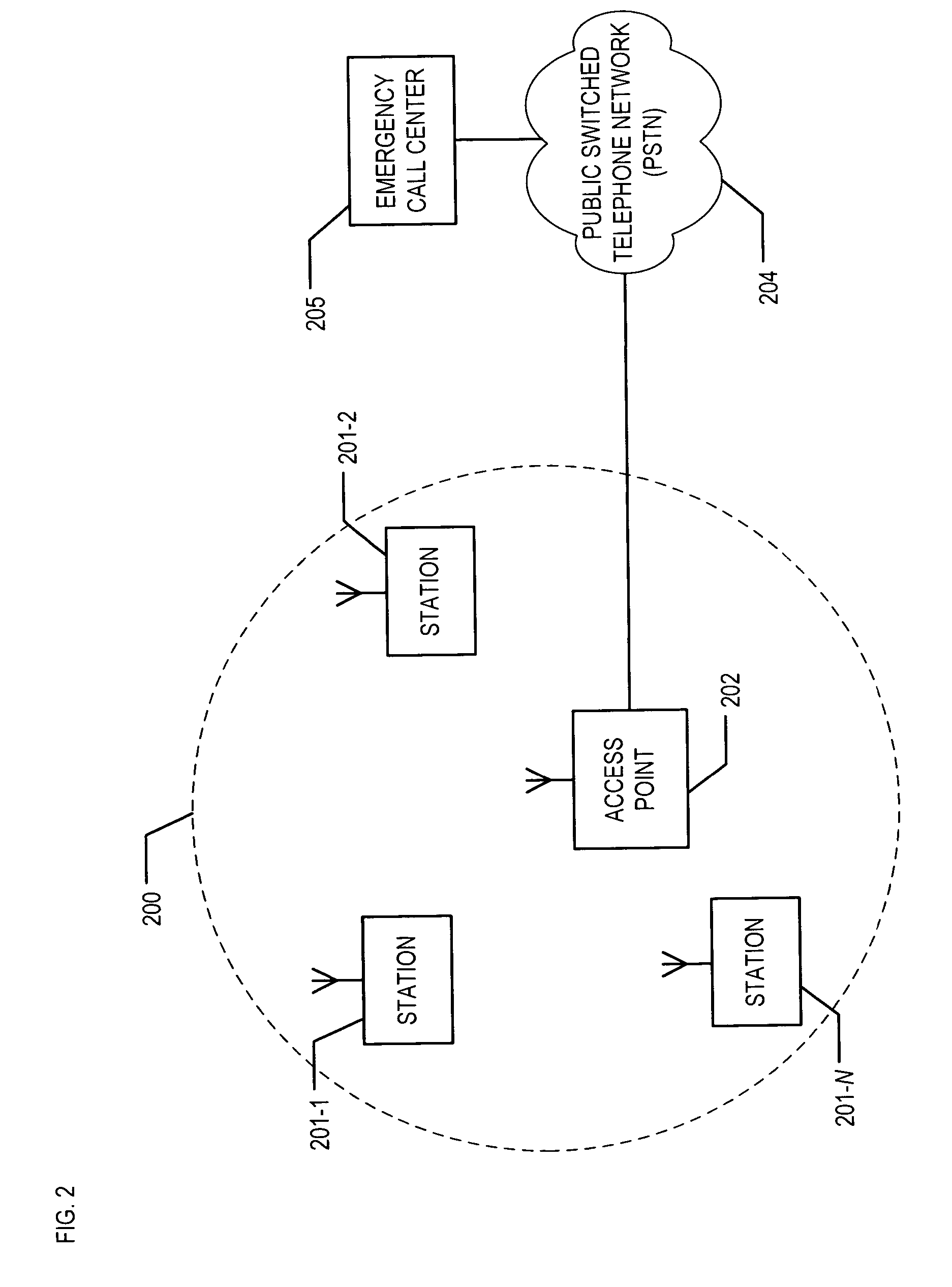Emergency call handling in contention-based wireless local-area networks
a wireless local-area network and call handling technology, applied in the field of telecoms, to achieve the effect of high quality-of-servi
- Summary
- Abstract
- Description
- Claims
- Application Information
AI Technical Summary
Benefits of technology
Problems solved by technology
Method used
Image
Examples
Embodiment Construction
[0023]FIG. 2 depicts a schematic diagram of exemplary wireless local-area network 200 connected to emergency call center 205 via Public Switched Telephone Network (PSTN) 204, in accordance with the illustrative embodiment of the present invention. Wireless local-area network 200 comprises stations 201-1, 201-2, and 201-3, and access point 202. As shown in FIG. 2, access point 202 and emergency call center 205 are connected to Public Switched Telephone Network (PSTN) 204 in well-known fashion (e.g., via a wireline link, wireless link, public branch exchange [PBX], intermediary server, etc.).
[0024]FIG. 3 depicts a block diagram of the salient components of exemplary emergency call center 205. As shown in FIG. 3, emergency call center 205 comprises public branch exchange (PBX) 301, and operator telephones 302-1 through 302-N, interconnected as shown.
[0025]FIG. 4 depicts a block diagram of the salient components of access point 102 in accordance with the illustrative embodiment of the p...
PUM
 Login to View More
Login to View More Abstract
Description
Claims
Application Information
 Login to View More
Login to View More - R&D
- Intellectual Property
- Life Sciences
- Materials
- Tech Scout
- Unparalleled Data Quality
- Higher Quality Content
- 60% Fewer Hallucinations
Browse by: Latest US Patents, China's latest patents, Technical Efficacy Thesaurus, Application Domain, Technology Topic, Popular Technical Reports.
© 2025 PatSnap. All rights reserved.Legal|Privacy policy|Modern Slavery Act Transparency Statement|Sitemap|About US| Contact US: help@patsnap.com



